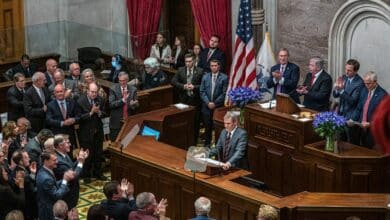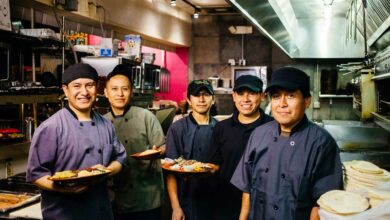Pandemic-triggered hardship forces thousands into Panama’s informal sector

By Giovanna Ferullo M.
Panama City, Jan 14 (EFE).- Selling face masks and bags filled with beans and grains on the street is the new business of Sonora Espinosa, a 60-year-old Panamanian woman who lost a steady income source due to the pandemic and now tries to eke out a living on Panama City’s Avenida Central.
December’s hustle and bustle has subsided, giving way to a very quiet first couple weeks of January on La Peatonal, as that emblematic downtown pedestrian shopping street also is known.
Stores, street vendors known as “buhoneros” who have a municipal permit to sell their wares and unlicensed vendors like Espinosa compete there for business from a small number of would-be customers.
“It was busier in December, but now and in previous months (of 2021) it’s been very sad,” she said. “There’s no money. The people just walk (along the boulevard) to clear their minds filled with worry, but the money’s not there. There are days that are difficult and challenging for me.”
Espinosa, whose husband also is in his 60s and unemployed, had managed a cafeteria at a school that, like educational institutions nationwide, was forced to close its doors at the start of the pandemic in March 2020.
None of the nine people who once worked there now has a formal job, she said.
Espinosa is hopeful that when schools finally reopen in March she will be able to resume her cafeteria business, the sudden closure of which nearly two years ago caused an “enormous loss of more than $5,000” worth of products.
She is among the 47.6 percent of Panama’s economically active population who are currently part of the informal economy – a group that numbers 677,875 people, according to official figures released in October.
That rate had stood at 44.9 percent prior to the pandemic but then shot up to 52.8 percent in September 2020. The unemployment rate that year rose to a 20-year high of 18.5 percent.
The nation’s gross domestic product fell by a whopping 17.9 percent in 2020 due to both internal and external factors.
Panama’s economy, which is heavily service-based and thrives or suffers depending on global economic trends, has now begun to recover. It expanded 14.9 percent between January and September 2021, while the unemployment rate stood at 11.3 percent in October.
But the dean of the economics department at the public University of Panama, Rolando Gordon, said it will be difficult to improve employment levels in 2022.
“The employment that’s being created is informal” and that has an impact on the state’s finances “because informal (workers) don’t pay direct taxes,” such as income tax, he told Efe.
Ricaurte Ruse, 41, has been an informal street seller for 16 years at a fixed stall on La Peatonal. He told Efe that many people have recently turned to street vending to make a living.
“A lot of people ask me, ‘What can I sell? What can I do?’ They’re people who aren’t (accustomed to selling on the street), but the pandemic has forced them to,” said Ruse, who scrapes out a living for himself, his wife and their three children by selling clothing and accessories.
Mario Antonio Rosh, a 50-year-old who has been working as a street vendor for 30 years, said the pandemic-triggered lockdowns generated a “lot of need” and that “there’s hunger in this country.”
“A lot of people are ashamed” to sell goods on the street, he said. “But they’ve had to do it for their children; I’ve seen quite a significant increase.”
Raul Palacios, 43, said he used to work as a contractor at a building but that the “pandemic did away with all that” and forced him to return to street vending.
“It’s not that bad,” but the “the economy isn’t good because 40-50 percent of people are working and the rest are on the street seeing what they can do,” he said.





